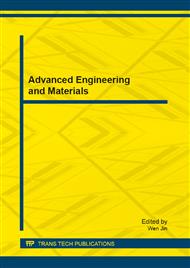p.275
p.280
p.286
p.292
p.298
p.304
p.310
p.319
p.326
Effect of Coiling and Normalizing Annealing on the Microstructure of a Newly Developed Cold-Rolled Non-Oriented Electrical Steel
Abstract:
In order to improve the magnetic properties, copper was added to cold-rolled non-oriented electrical steel with low carbon and low silicon. The grain sizes and precipitates in hot-rolled bands of the investigated steel were quantitatively studied. The results show that the recrystallization of deformed grains has been completed in the coiled bands and the recrystallized grains are fine due to low coiling temperature and pinning effect of precipitates. But grains grew up obviously after normalizing annealing at 850°C for 1h because the mobility of grain boundary is so good at elevated temperature that pinning effect of precipitates can’t prevent the migration of grain boundary. Thus, normalizing annealing is necessary to obtain large grains in hot-rolled band. In addition, the typical morphologies of precipitates in hot-rolled bands are square, rectangular, hexagonal and triangular and they are identified as AlN phase based on EDS and SEAD analysis, which can form by epitaxial growth mode. For the hot-rolled bands coiled at 550°C, the increase of average size and volume fraction of AlN particles with coiling time is mainly related to the growth of AlN particles, whereas for the hot-rolled bands coiled at 650°C, the decrease of average size and the increase of volume fraction of AlN particles with coiling time are chiefly attributed to the precipitation of many small AlN particles. The volume fraction of AlN particles increases with coiling temperature because they precipitate more quickly at 650°C than at 550°C.
Info:
Periodical:
Pages:
298-303
Citation:
Online since:
February 2013
Authors:
Price:
Сopyright:
© 2013 Trans Tech Publications Ltd. All Rights Reserved
Share:
Citation:


